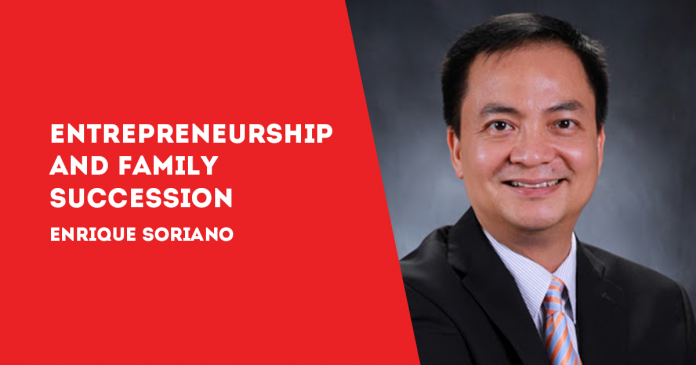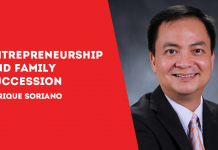
BY PROF. ENRIQUE SORIANO
NOW THAT George, the founder of a 50-year-old business, has been laid to rest and at peace with himself and his Maker, the family can now move forward, united and singularly focused on growing the business.
In my last exchange with Gina, the successor, she replied, “Despite Dad’s departure, we can still feel his presence. He is still felt in the head office and in the factories, as if he didn’t leave us. After Dad’s burial, I have been meeting my siblings and executives almost every week. That’s what Dad really wanted, that all of us must find the time to communicate no matter how uncomfortable the issues are. It is now our stewardship duty to focus on continuing his legacy.”
How I wish this outpouring of love, recognition and great tribute to the founder can apply to all business leaders. This is a wonderful chapter and credit goes to the founder’s tenacity and his constant reminder to his children that “when they are united, they can solve all their problems but when they are divided, they can expect nothing.”
Sadly, it is the exact opposite to close to 80% of business owners in Asia that are still mired in confusion and denial that the day before yesterday should have been the best time to plant the succession tree.
The power of preparing early
The overall succession approach and the way the transition integrated the very critical “family component” into the management and ownership processes is complex and takes time. It is an emotional roller coaster ride with boosters.
If the process does not upset or jolt some family members, the collaboration between the family and the advisor may not be effective. For George’s family, they soon realized that for any transition to be successful, it must be inclusive and must cover the entire ecosystem (family, business, ownership).
One of the major takeaways that the founder superbly handled was that he never forced succession upon his children. He knew his time was up but he also realized that any major change had to be conveyed early and nurtured by the entire family.
When my firm got engaged, we told George that the process would take anywhere from three to six years. He understood completely and he started buckling down to work.
When the children sensed George’s sincerity, they eventually embraced the process but it still took my team around two years to notice some form of acceptance to the plans. The level of detail required to plan an effective transition may at times seem overwhelming but the founder never stopped the process. He led it and we were all inspired.
In summary, the following valuable insights are worth sharing:
* A solid succession is a journey rather than a sprint. It entails a highly intensive, fluid collaboration between the founder, the potential successors, and the advisor.
* Succession planning will ensure the continuity of your business and perpetuate your legacy and live out your personal values and core principles after you retire
* Anointing the successor is only half the story. Creating a transformative corporate culture consistent with your beliefs and philosophy will help and align the next generation leaders to embrace your guiding principles.
* A thorough, process driven succession plan allows the founder to explore new entrepreneurial pursuits and
* A successful transition will result to a tax efficient handover of ownership to the next generation
Family business and succession planning are indeed complicated because it requires key business leaders like George to make sensitive and sometimes emotional decisions out of context. But for as long as family business advisors continue to handhold family members in focusing on a solid plan, the successful transformation can happen sooner than later.
George knew that change would be tough as it meant giving up things that the family enjoyed for years. All for the greater good.
As a fitting tribute to George’s beautiful succession story, I am sharing a quote from a Chinese proverb, “When the winds of change blow, some people build walls and others build windmills.”
It is time for founders to choose well./PN

